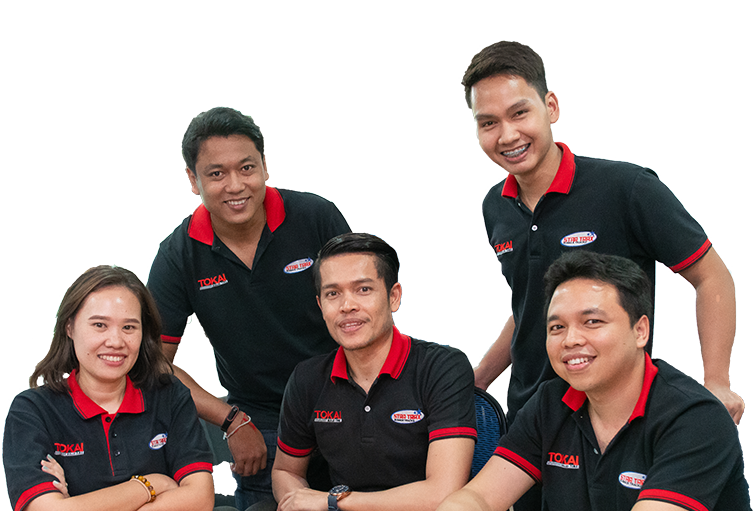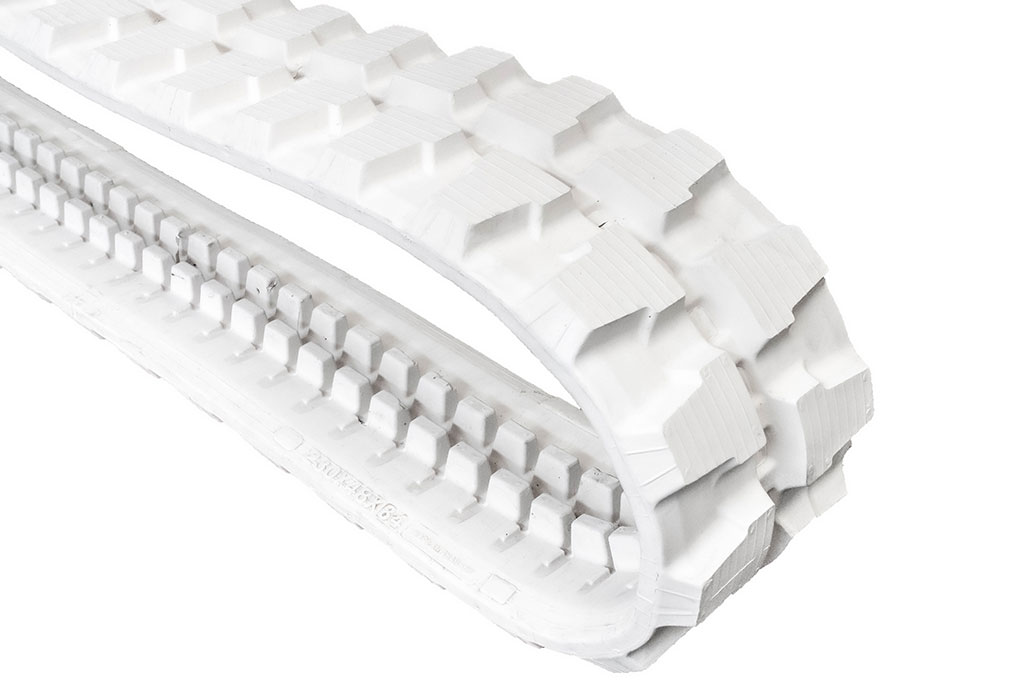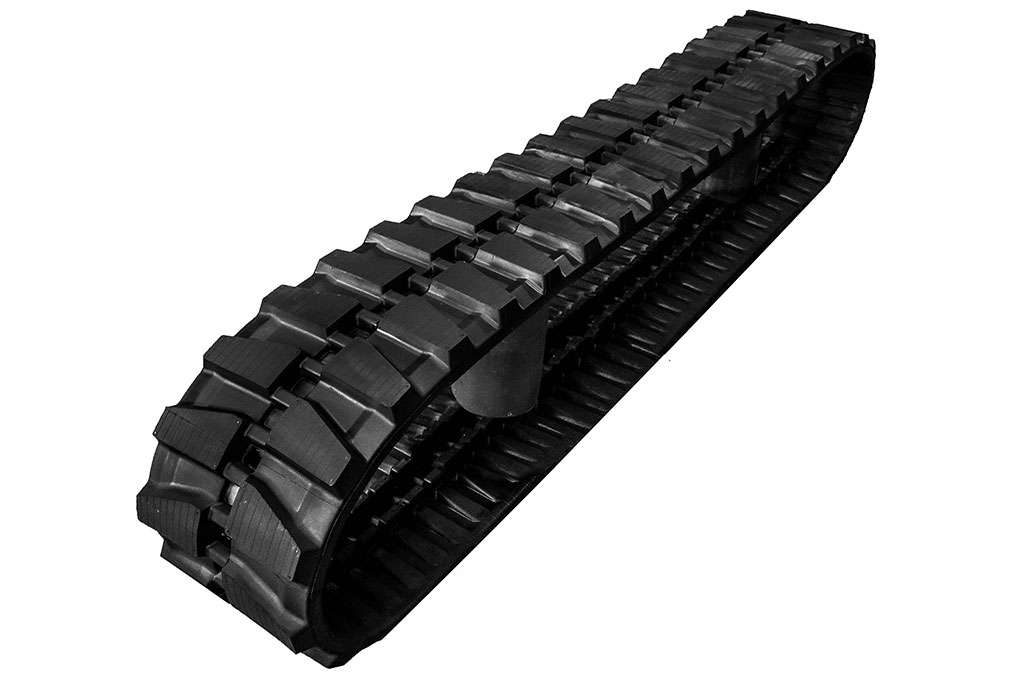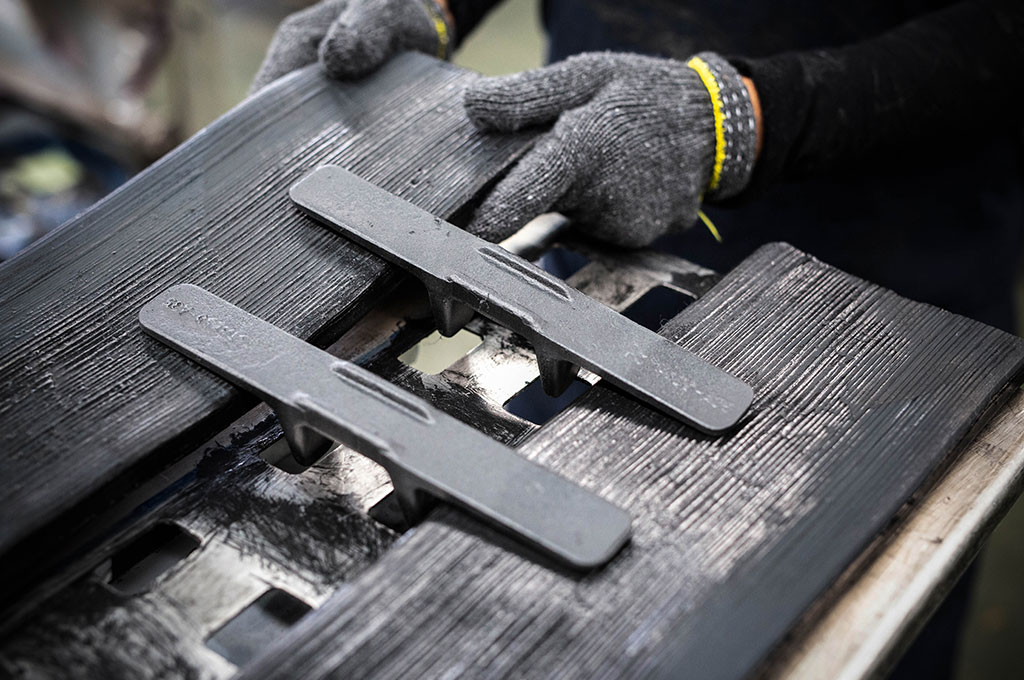Mouldmate, the owners of TOKAI Solid Tire, have been designing and producing rubber tracks for about 15 years, making us not only very experienced, but also one of the ealier companies outside of the huge multinationals to have been designing and making tracks for this long. If you know tracks, you know that experience counts for a lot, and that experience goes into the design and production - and testing & QA - of every track TOKAI produces and sells.
Our tracks aren't just "as good as OEM," they are OEM-approved, and they have stood the test of time from the rice field of Asia to the construction sites of Europe, Australia and North America. If you think a subcontractor with a rental CTL in the States punishes tracks, you should see what happens to our tracks on a heavily modded mini combine harvester in rural Myanmar. We know what happens and how to address it because our engineers have been out there, knee deep in the mud, learning exactly what happens in application and how to address it for a decade and a half.
So, we thought we would give you some quick FAQ points on why you should consider TOKAI tracks the next time you need to put new tracks on your machine.
Natural rubber resists tears better and holds together better after tearing when compared to synthetic rubber. You actually will see tears earlier with all-natural rubber, but they won't grow quickly and you can
keep using the track, whereas a track made with more synthetic rubber, in the same conditions, once it tears you can pretty much set your watch for failure.
That's why we use all-natural rubber throughout
our tracks, but especially in the lug layer. See, most people think the most important thing is being able to see a lot of rubber, a big thick track, but that just ain't true. What counts is the quality and
the compounding for application. It's no different than a steak - a giant hunk of gristly beef, poorly cooked, isn't a better steak than a nice, juicy NY strip cooked just right. So, don't be fooled by the "it's
got more rubber!" marketing gimmicks. Look for all-natural rubber and the smooth, solid - but not shiny, like synthetic - finish you can spot a mile away.
It's worth noting that Thailand produces
more natural rubber than any country in the world. You can look it up. That's why we can afford to make such a high quality track with all-natural rubber. It's also why when oil prices skyrocket, we don't need
to worry about raising the cost of our tracks the way some factories who rely heavily on synthetic rubber might.
Natural rubber, among other things, also provides greater rebound resilience, meaning
that every time that lug rolls down under pressure and then rolls back up, the natural rubber takes less of a beating than synthetic rubber would.
Combined with application-specific design and construction,
our tracks outlast many of the tracks out there and definitely beat them on a cost-per-hour basis. For example, our T-Lug CTL track doesn't have that giant Full C lug precisely because that lug places more strain
on the track every time it rolls over. If you know anything about CTL tracks, you know they typically break before they wear out, and the reason they break, unless you really high-point them or put them under
enormous strain, is that the track takes enormous pressure every time it rolls down in front and rolls back up. The fatter your lug, the more internal stress your lug is taking and the more strain it's putting
on the joints in-between. That means while some might think that big old lug is sturdier, it's likely going to break the track sooner and wasn't necessary in the first place.
So, to sum up, all-natural
rubber and application-specific construction based on 15 years of track design and production give us, and you, a better cost per hour with a track you can trust.
You just can't beat all-natural Thai
rubber, and that's why we use it - you should too.
The first sign that you're dealing with a BS tire is when the factory salesman tells you, "Oh yeah, it'll beat the crap outta the SC18 or the Elite XP." At TOKAI our policy is we don't trash other people's product
and, in fact, our engineers and designers think very highly of the SC18, which the TOKAI EP has competed directly against in national markets - and outperformed on a quality at cost-per-hour basis in enough
applications to hold entire markets.
Our standard construction, all-purpose compound 3-layer EP runs very well in most applications, and wears better in certain applications than some of the most well-known
tires, at a price that's considerably more affordable. The EP is not a budget tire, though, it's a value-priced premium tire. If the top tires are the Maybachs of the solid industrial forklift tire world, the
TOKAI EP is the Audi that pleasantly surprises you. Give it a shot, you'll be glad you did.
At Mouldmate, we have our own R&D, compounding and testing departments - and a number of mixers, large and small. We even have testing mixers about the size of a full size pickup so our compounding nerds can
spit out sample after sample in small batches to develop compounds more quickly and accurately. Once developed, we have small batch mixers and really huge mixers, several stories tall all in, which means we're
one of the few factories that has no trouble compounding small batches of tires for you. If you're used to being told you need to order a large volume to get a mix of compounds in your container, well, you're
dealing with a one-size-fits-all supplier. We very much are not that.
And that's why our list of speciifc compounds and constructions for different situations is so comprehensive that we gave up even
publishing it for people. Our tires run, every day, in some of the largest (and hottest) ports and airports in the world, for example, so when the port was having trouble chewing up tires, our engineers
flew out and looked at things in person, like they often do, and realized that the port was running the big old forklifts through water channels between runs to cool the tires - sometimes they were even cracking
the rim! Our engineers studied everything, took measurements and notes, then came back and solved the problem.
Airports require highly tested and certified compounds so that the GSE tires don't
chunk, end up in an engine and bring down a plane, so we have a special compound for that. It's not just ports and airports, though, it's everything. Running over sharp odds and ends in a hotter-than-hell foundry?
Carrying long steel beams that bow and flex as you ride? Using an oversized truck to carry big, light loads of lumber on rough surfaces? Running in a refrigerated environment? The list of situations we have
specifically tested and compoudned for is really, really long and comprehensive. One visitor to our factory from a very large company commented that he had never seen this level of capability in a factory short
of the major international brands. He was surprised, but we weren't. We love what we do, and we take it seriously. If you don't control every aspect of the design and engineering and compounding and production
and testing processes then you don't really know what you're making and when problems arise you don't know how to fix the black box you're running. That's never a problem at Mouldmate, maker of TOKAI Solid Tires
and tracks (and run-flat inserts and poly wheels and and and...).
Imagine a company with nearly thirty years of constantly traveling to extreme - and sometimes just odd - applications around the world,
solving them one by one and you'll understand why when no one else can, or even cares to solve your problem, TOKAI Solid Tire is not only happy to, but excited to. Our engineers love solving problems, so if
you've got one, get in touch with us at [email protected].
One questions we get asked a lot, especially by dealer-distributor customers, is whether our tires are difficult to press, or can only be pressed from one side. Do they tear easily? Require a lot of pressure?
Good
news: Our tires are designed with easy pressing in mind. The inner heel layer isn't made of cheap gunk that can't take pressure, because cutting costs to make a tire as cheap as possible results in a cheap piece
of junk. When you're pressing a TOKAI, you won't need cross your fingers and close your eyes and hope. It just works, like the rest of the tire.
People often ask us, "What's your warranty?" and the answer is one of those rules so simple that it flummoxes a lot of folks:
If we broke it, we'll fix it. Period.
Just like any other company, large
or small, we've turned out a bad product here and there over several decades, and when we have - you can ask our customers - we've studied the situation, put our engineers on it, looked up every detail of production
for that tire (we keep extensive records on every single tire, what goes into it, how it got made and who made it) and, if we did something wrong, then we've warrantied the tire with no questions asked.
We
know in a world of 12 page warranties citing everything from act of God to international terrorism you're used to seeing a telephone book's worth of language to explain a very simple thing, but we think it's
best not to complicate the obvious.












